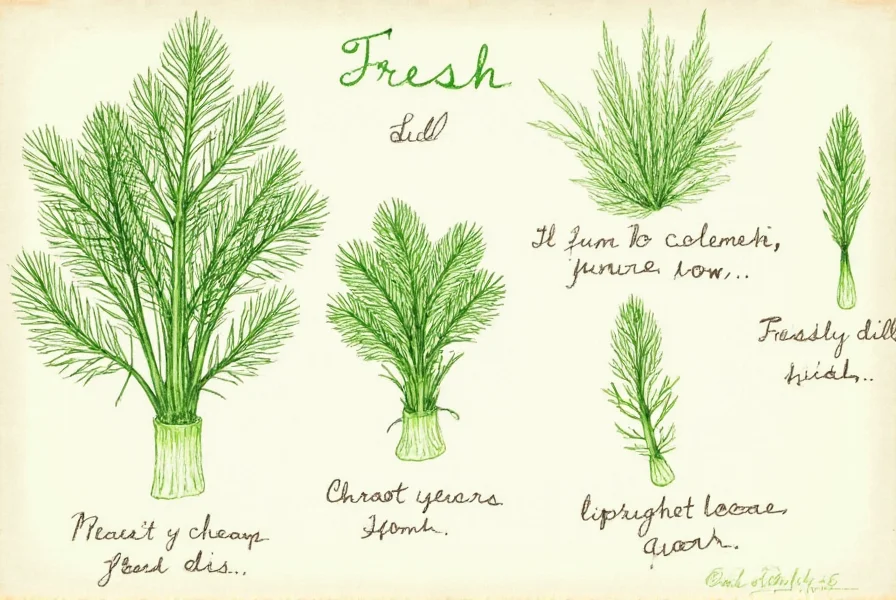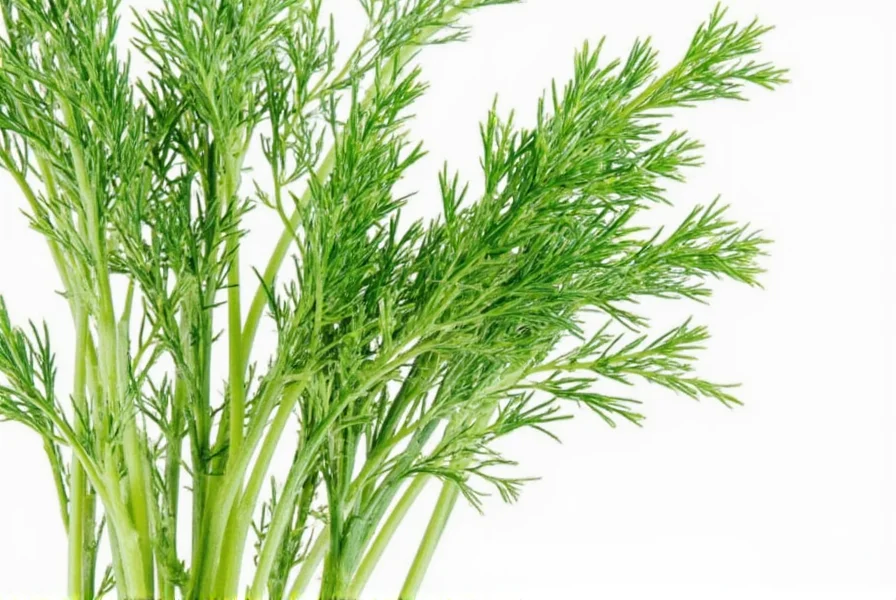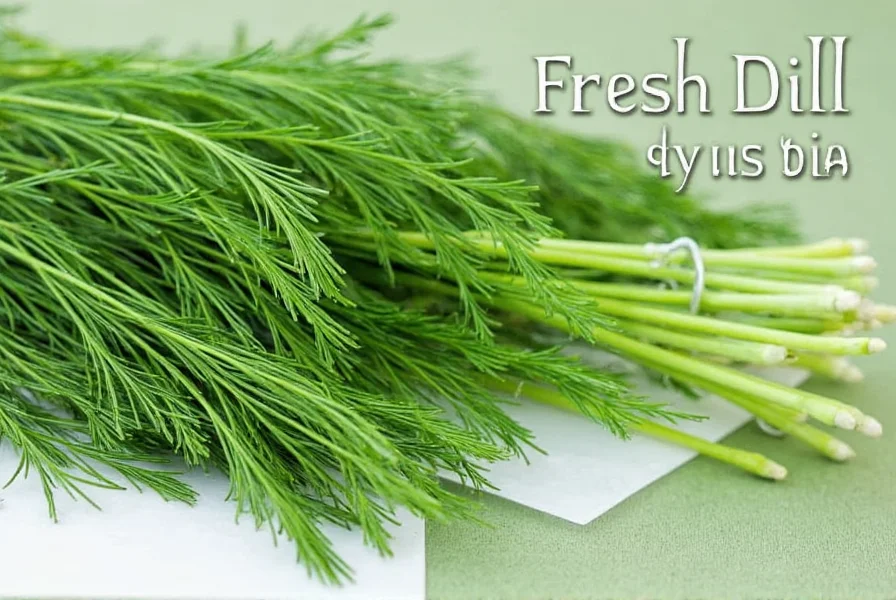Fresh dill is a popular herb known for its distinctive appearance and flavor profile. Understanding what does fresh dill look like helps home cooks and gardeners properly identify this versatile herb. The plant's delicate structure makes it easily distinguishable from other common herbs when you know what to look for.
Visual Characteristics of Fresh Dill
Fresh dill, also known as dill weed, displays several distinctive visual features that help with proper identification. The herb grows in soft, feathery clusters with fine, thread-like leaves that resemble ferns. These delicate fronds typically measure 4-8 inches in length and grow along thin, hollow stems that can reach 12-24 inches tall when fully mature.
The color of fresh dill provides an immediate indicator of quality. Vibrant, medium to bright green foliage signals peak freshness, while yellowing or browning indicates the herb is past its prime. When examining how to identify fresh dill, look for crisp, supple stems rather than limp or woody ones.

Distinguishing Fresh Dill from Similar Herbs
Many beginners confuse fresh dill with fennel or caraway due to their similar appearances. Understanding what does dill look like in the garden prevents this common mistake. While fennel has thicker, more rigid fronds and a bulbous base, dill features finer, more delicate foliage with a lighter green color.
Another key differentiator is the aroma. Fresh dill emits a distinctive scent that combines grassy notes with subtle hints of anise and citrus. When crushed between your fingers, the herb releases its characteristic fragrance, helping confirm proper identification. This sensory element complements the visual assessment of fresh dill characteristics.
| Herb | Leaf Structure | Color | Stem Characteristics |
|---|---|---|---|
| Fresh Dill | Feathery, thread-like | Bright green | Thin, hollow, flexible |
| Fennel | Thicker, more rigid | Darker green | Thicker with bulb base |
| Caraway | Finer than fennel | Medium green | More solid, less hollow |
Assessing Freshness: What to Look For
When selecting dill at the grocery store or farmers market, knowing how to tell if dill is fresh ensures optimal flavor in your dishes. Fresh dill should have:
- Vibrant green color without yellowing or browning
- Crisp, flexible stems that don't snap easily
- No signs of wilting or sliminess
- A clean, fresh aroma without mustiness
Wilted dill appears limp with drooping fronds, while spoiled dill develops dark spots and a sour smell. Properly identifying fresh dill prevents disappointment when preparing recipes that specifically call for this herb's unique flavor profile.
Seasonal Availability and Selection Tips
Fresh dill is most abundant during late spring through early summer, though many grocery stores carry it year-round. When choosing dill, look for bunches with the most vibrant green color and avoid any with yellowing leaves or slimy stems.
Understanding what color is fresh dill helps with proper selection. The ideal color ranges from medium to bright green, with no discoloration. The stems should feel firm but flexible, not woody or brittle. For gardeners wondering what does dill look like in the garden, the plant produces small yellow flowers in umbrella-shaped clusters when it bolts.

Using Fresh Dill in Cooking
Once you've correctly identified fresh dill, proper usage maximizes its flavor. Unlike dried dill, which has a more concentrated but different flavor profile, fresh dill works best when added near the end of cooking to preserve its delicate taste.
When substituting fresh dill for dried in recipes, use a 3:1 ratio (three parts fresh to one part dried). This knowledge proves valuable when following recipes that don't specify which form to use. Understanding the difference between fresh dill vs dried dill prevents flavor imbalances in your dishes.
Frequently Asked Questions
What's the difference between dill weed and dill seed?
Dill weed refers to the fresh or dried leaves of the dill plant, while dill seed comes from the plant's mature seed heads. Dill weed has a lighter, grassier flavor, while dill seeds have a stronger, more concentrated taste with slight citrus notes. They're not interchangeable in recipes due to their different flavor profiles and intensities.
How can I store fresh dill to keep it fresh longer?
To maximize freshness, treat dill like cut flowers. Trim the stems and place them in a glass with about an inch of water, then cover loosely with a plastic bag. Store in the refrigerator for up to one week. Alternatively, wrap the dill in a slightly damp paper towel and place it in a plastic bag with a few air holes before refrigerating.
Can I grow dill indoors and how would it look?
Yes, you can grow dill indoors in a sunny windowsill or under grow lights. Indoor dill typically grows to about 12-18 inches tall with the same feathery, bright green fronds as outdoor plants. The main difference is that indoor dill may have slightly less intense flavor due to reduced sunlight exposure, but its appearance remains identical to outdoor-grown dill.
Why does my fresh dill turn brown so quickly?
Fresh dill turns brown when exposed to air, moisture fluctuations, or improper storage. The delicate leaves oxidize quickly when cut, similar to how apples brown. To prevent this, store dill properly in the refrigerator with minimal air exposure. Avoid washing dill until just before use, as excess moisture accelerates browning and spoilage.











 浙公网安备
33010002000092号
浙公网安备
33010002000092号 浙B2-20120091-4
浙B2-20120091-4